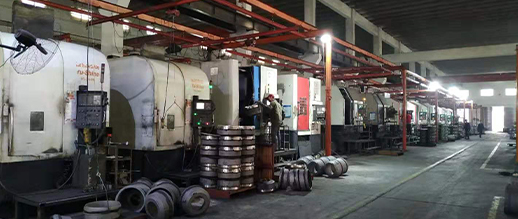
-
 Afrikaans
Afrikaans -
 Albanian
Albanian -
 Amharic
Amharic -
 Arabic
Arabic -
 Armenian
Armenian -
 Azerbaijani
Azerbaijani -
 Basque
Basque -
 Belarusian
Belarusian -
 Bengali
Bengali -
 Bosnian
Bosnian -
 Bulgarian
Bulgarian -
 Catalan
Catalan -
 Cebuano
Cebuano -
 Corsican
Corsican -
 Croatian
Croatian -
 Czech
Czech -
 Danish
Danish -
 Dutch
Dutch -
 English
English -
 Esperanto
Esperanto -
 Estonian
Estonian -
 Finnish
Finnish -
 French
French -
 Frisian
Frisian -
 Galician
Galician -
 Georgian
Georgian -
 German
German -
 Greek
Greek -
 Gujarati
Gujarati -
 Haitian Creole
Haitian Creole -
 hausa
hausa -
 hawaiian
hawaiian -
 Hebrew
Hebrew -
 Hindi
Hindi -
 Miao
Miao -
 Hungarian
Hungarian -
 Icelandic
Icelandic -
 igbo
igbo -
 Indonesian
Indonesian -
 irish
irish -
 Italian
Italian -
 Japanese
Japanese -
 Javanese
Javanese -
 Kannada
Kannada -
 kazakh
kazakh -
 Khmer
Khmer -
 Rwandese
Rwandese -
 Korean
Korean -
 Kurdish
Kurdish -
 Kyrgyz
Kyrgyz -
 Lao
Lao -
 Latin
Latin -
 Latvian
Latvian -
 Lithuanian
Lithuanian -
 Luxembourgish
Luxembourgish -
 Macedonian
Macedonian -
 Malgashi
Malgashi -
 Malay
Malay -
 Malayalam
Malayalam -
 Maltese
Maltese -
 Maori
Maori -
 Marathi
Marathi -
 Mongolian
Mongolian -
 Myanmar
Myanmar -
 Nepali
Nepali -
 Norwegian
Norwegian -
 Norwegian
Norwegian -
 Occitan
Occitan -
 Pashto
Pashto -
 Persian
Persian -
 Polish
Polish -
 Portuguese
Portuguese -
 Punjabi
Punjabi -
 Romanian
Romanian -
 Russian
Russian -
 Samoan
Samoan -
 Scottish Gaelic
Scottish Gaelic -
 Serbian
Serbian -
 Sesotho
Sesotho -
 Shona
Shona -
 Sindhi
Sindhi -
 Sinhala
Sinhala -
 Slovak
Slovak -
 Slovenian
Slovenian -
 Somali
Somali -
 Spanish
Spanish -
 Sundanese
Sundanese -
 Swahili
Swahili -
 Swedish
Swedish -
 Tagalog
Tagalog -
 Tajik
Tajik -
 Tamil
Tamil -
 Tatar
Tatar -
 Telugu
Telugu -
 Thai
Thai -
 Turkish
Turkish -
 Turkmen
Turkmen -
 Ukrainian
Ukrainian -
 Urdu
Urdu -
 Uighur
Uighur -
 Uzbek
Uzbek -
 Vietnamese
Vietnamese -
 Welsh
Welsh -
 Bantu
Bantu -
 Yiddish
Yiddish -
 Yoruba
Yoruba -
 Zulu
Zulu
Jan . 30, 2025 06:19
Back to list
do you bleed drum brakes
When it comes to maintaining the braking system of your vehicle, understanding the intricacies of different brake types is crucial. Drum brakes, although not as commonly seen on modern vehicles as disc brakes, are still prevalent, particularly in older models and some budget vehicles. One question that often arises among car enthusiasts and DIY mechanics is Do you bleed drum brakes?
3. Check Brake Fluid Ensure that the brake fluid in the master cylinder is at the correct level. As you bleed the brakes, continue to monitor and top up the brake fluid to prevent air from re-entering the system. 4. Attach a Clear Tube For best results, use a clear tube that fits snugly over the bleeder screw and place the other end in a clear container partially filled with brake fluid. This setup allows you to visually monitor the bleeding process and prevents air from backflowing into the system. 5. Bleeding Process With an assistant in the driver’s seat, instruct them to pump the brake pedal several times and hold it down. As they hold, slowly open the bleeder screw to release trapped air and fluid. Once the pedal sinks to the floor, close the bleeder screw. Repeat this process until the expelled fluid runs clear and bubble-free. 6. Final Checks After completing the bleeding process on all drum brake assemblies, ensure everything is securely closed and no fluid is leaking. Test the brake pedal’s firmness before taking the vehicle for a test drive. In the realm of automotive maintenance, authority and trustworthiness are garnered through meticulous attention to detail and the adherence to best practices. Some might wonder if bleeding drum brakes is an essential process to undertake regularly. The truth remains that regular inspection and maintenance of the entire brake system contribute to safer driving experiences and prolong the lifespan of vehicle components. In conclusion, while drum brakes may seem like outdated technology, their presence in many vehicles necessitates understanding their maintenance requirements. Bleeding these brakes is not just an elective task but a safety imperative. Whether you are a seasoned mechanic or a car owner keen on DIY maintenance, knowing how to bleed drum brakes can be invaluable. Embrace the process with a focus on accuracy and thoroughness, and your vehicle's braking performance will undoubtedly remain reliable and effective.


3. Check Brake Fluid Ensure that the brake fluid in the master cylinder is at the correct level. As you bleed the brakes, continue to monitor and top up the brake fluid to prevent air from re-entering the system. 4. Attach a Clear Tube For best results, use a clear tube that fits snugly over the bleeder screw and place the other end in a clear container partially filled with brake fluid. This setup allows you to visually monitor the bleeding process and prevents air from backflowing into the system. 5. Bleeding Process With an assistant in the driver’s seat, instruct them to pump the brake pedal several times and hold it down. As they hold, slowly open the bleeder screw to release trapped air and fluid. Once the pedal sinks to the floor, close the bleeder screw. Repeat this process until the expelled fluid runs clear and bubble-free. 6. Final Checks After completing the bleeding process on all drum brake assemblies, ensure everything is securely closed and no fluid is leaking. Test the brake pedal’s firmness before taking the vehicle for a test drive. In the realm of automotive maintenance, authority and trustworthiness are garnered through meticulous attention to detail and the adherence to best practices. Some might wonder if bleeding drum brakes is an essential process to undertake regularly. The truth remains that regular inspection and maintenance of the entire brake system contribute to safer driving experiences and prolong the lifespan of vehicle components. In conclusion, while drum brakes may seem like outdated technology, their presence in many vehicles necessitates understanding their maintenance requirements. Bleeding these brakes is not just an elective task but a safety imperative. Whether you are a seasoned mechanic or a car owner keen on DIY maintenance, knowing how to bleed drum brakes can be invaluable. Embrace the process with a focus on accuracy and thoroughness, and your vehicle's braking performance will undoubtedly remain reliable and effective.
Latest news
-
What Are Drum BrakesNewsJul.07,2025
-
Understanding Brake Drum MaterialNewsJul.07,2025
-
Semi-Trailer Brake Drum: A Key Component for Extreme Loads and Long-Distance TransportNewsJul.07,2025
-
Drum Brake Pads for SaleNewsJul.07,2025
-
Brake Drums for SaleNewsJul.07,2025
-
Brake Drum ManufacturerNewsJul.07,2025
-
Aluminum Brake Drums: The Future of High-Performance CarsNewsJul.07,2025
